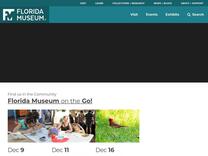Graduate Students – Department of Natural History https://www.floridamuseum.ufl.edu/nhdept/graduate-students/
Graduate Student Directory Currently registered students, last updated Spring 2024. Please contact kwillmott@flmnh.ufl.edu to submit revisions. A | B | C | D | E | F | G | H | I | J | K | L | M | N | O | P | Q | R | S | T | U | V | W | X | Y | Z – A – ACEVEDO-CHARRY, ORLANDO oa
– K – K C, SAJAN sajankc@ufl.edu Department:Â Entomology and Nematology Committee

